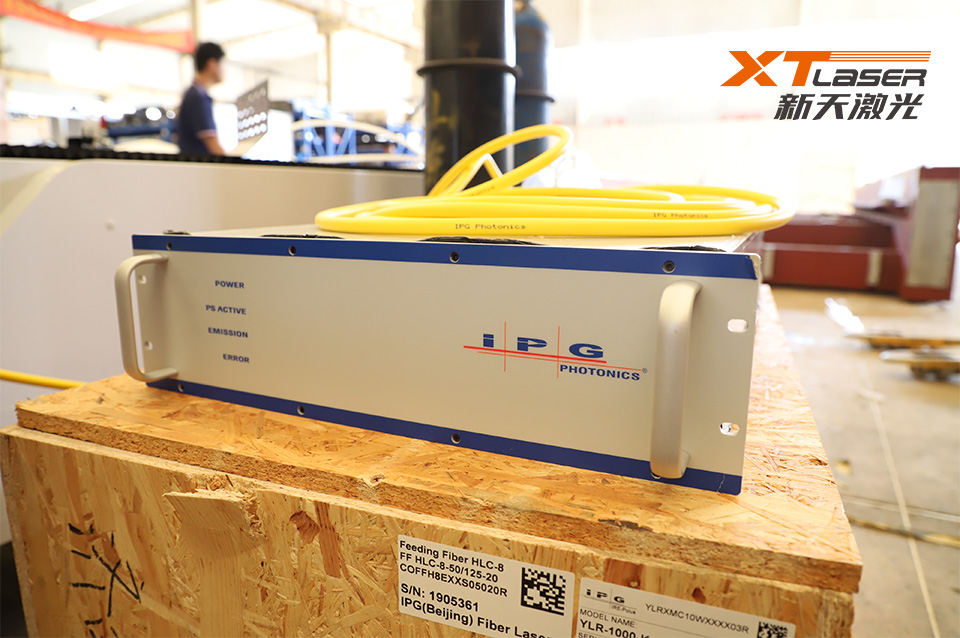What are the special processes of laser cutting machines
XT Laser – Laser Cutting Machine
What are the special processes of laser cutting machines? With the advancement of technology, more and more companies have begun to choose laser cutting machines to replace traditional cutting machines. Compared with traditional cutting equipment, laser cutting machines have greatly improved in accuracy, efficiency, and equipment functionality. So it is necessary to have a certain understanding of the unique process of laser cutting machines before using them to improve our production efficiency and product process quality. Let’s take a look at the traditional cutting methods of laser cutting machines. Craftsmanship that machines cannot do.

1. Jumping frog.
From the official definition, Leapfrog is the empty path of a laser cutting machine. Empty travel: That is to say, the laser cutting machine moves without cutting. For example, the machine first cuts hole 1, then cuts hole 2. The cutting head moves from point A to point B. Of course, it must be closed during movement. During the movement from point A to point B, the machine runs “empty”, which is called the empty stroke. However, if parabolic motion is used between points AB, instead of closing the cutting head to point B after cutting at point A, it will reduce the lifting time of the cutting head, greatly reduce user cutting costs, and improve user cutting efficiency. This new technology is called “frog jumping”. The most prominent feature of frog jumping is higher accuracy and faster speed. The laser cutting machine with frog jumping function is actually a technology for changing the Z-axis empty path.
2: Auto focus.
When cutting different materials, the focus of the laser beam is required to fall at different positions on the cross-section of the workpiece, as shown in the following figure, so it is necessary to continuously adjust the focus position. Some people believe that as long as the height of the cutting head is changed, the focus position will increase when the cutting head is raised, and decrease when the cutting head is lowered. Actually, things are not that simple. As we all know, the bottom of the cutting head is the nozzle. During the cutting process, the distance between the nozzle and the workpiece (nozzle height) is about 0.5-1.5mm, which is a fixed value, that is, the nozzle height remains unchanged, so the focus cannot be adjusted by lifting the cutting head, otherwise the cutting process cannot be completed. The focal length of a focusing lens cannot be changed, so it cannot be adjusted by changing the focal length. Changing the position of the focusing lens can change the focus position: if the focusing lens is lowered, the focus will decrease. When the focusing lens is raised, the focus also increases. This is also a commonly used automatic focusing method, which is driven by a motor to move the focusing mirror up and down. Another automatic focusing method is to configure a variable curvature mirror before the beam enters the focusing mirror, and change the divergence angle of the reflected beam by changing the curvature of the mirror, thereby changing the focus position.
3: Automatic edge finding.
If the paper is skewed, it may cause waste during the cutting process. If the cutting machine can sense the angle and origin of the sheet and adjust the cutting process to adapt to the angle and position of the sheet, it can avoid waste. After activating the automatic edge finding function, the cutting head starts from point P and automatically measures three points on the two vertical planes of the sheet: P1, P2, P3, and calculates the inclination angle A of the sheet and the angle of the sheet. The origin, with the help of automatic edge finding function, can effectively save time for workpiece adjustment, reduce labor intensity, and thus improve cutting efficiency.
4: Edge cutting.
If the contours of adjacent parts are straight lines and have the same angle, they can be combined into a straight line and cut only once, that is, common edge cutting. Obviously, ordinary edge cutting reduces cutting length and can significantly improve machining efficiency. Coedge cutting does not require the shape of the parts to be rectangular. Co cutting not only saves cutting time, but also reduces the number of perforations, so the benefits are very obvious. If 1.5 hours are saved every day and 500 hours are saved every year due to co cutting, the comprehensive cost per hour is calculated as 100 Metacomputing, which is equivalent to creating benefits of more than 50000 yuan a year.
The above are the unique processes of laser cutting machines compared to traditional cutting machines. Overall, there has been significant progress. This is also one of the reasons why some companies cannot afford to buy equipment and have to purchase it in installments.



